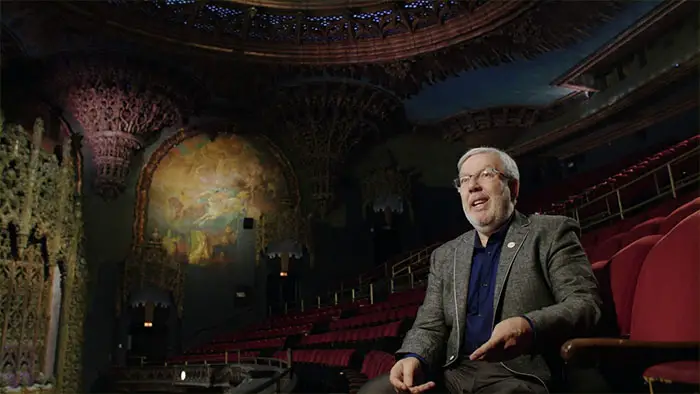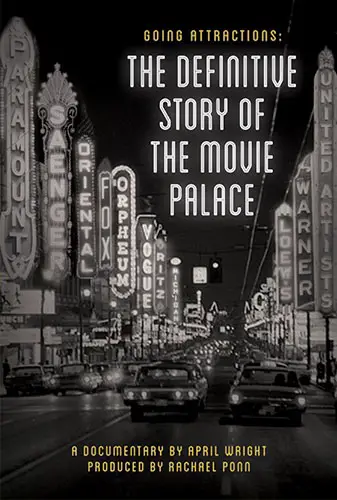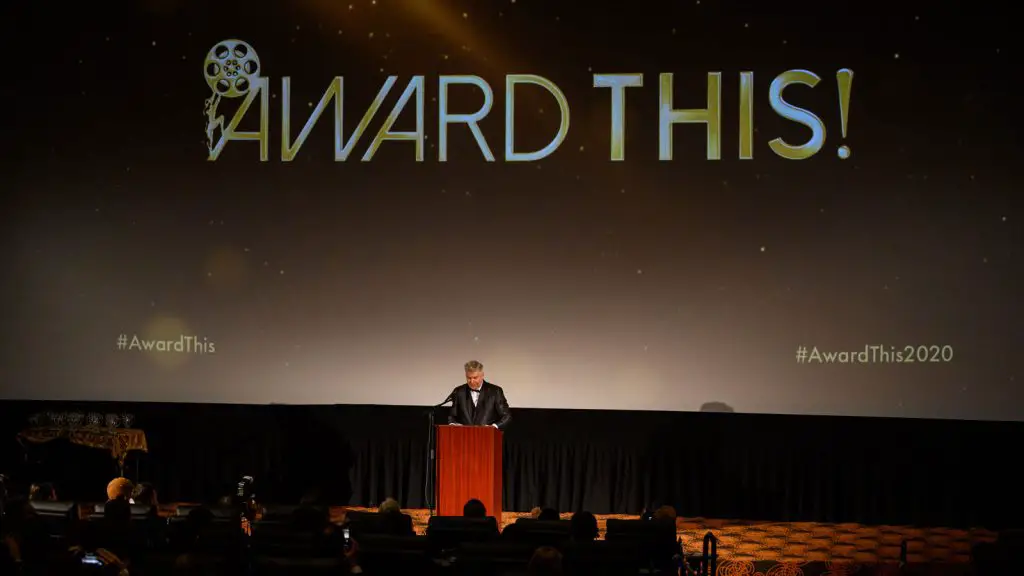
There was once a time when going to the cinema was an event akin to going to a Broadway play. Movie palaces were once brightly lit monuments nestled in the middle of cold city streets. It’s where you went with your family to experience what it was like to be royalty for ninety minutes. The history of these palaces is captured in April Wright’s documentary Going Attractions: The Definitive Story of the Movie Palace, her follow-up to Going Attractions: The Definitive Story of the Drive-In.
Going Attractions is a vital documentary that does more than stir-up nostalgia a time gone by; it provides a much-needed jolt as the ability to go to the cinema is currently on life support.
Sure the documentary is relatively standard in its presentation, composed primarily of expert interviews, historical photos, and vintage footage. The movie is a walk down memory lane and parallels the golden age of film. Guiding us on this journey are notable film historians, theater owners, and critics of our time, including film professor Ross Melnick, owner of Chicago’s Avalon New Regal Jerald Gary, Radio City Music Hall savior Rosie Novellino-Mearns, and beloved critic Leonard Maltin.
The film-going experience has changed over the last 100 years of going to the movies. I’d describe it as a de-evolution. At the birth of the big Hollywood studio system, it was a time when the going motto in Hollywood was “the bigger, the better,” and movie theaters in Hollywood needed to reflect that. Drive down Hollywood Boulevard today, and you’ll see remnants of these palaces. These balconied auditoriums were massive in scale, and the interiors were opulent and ornate as many were designed by big studio production designers and artists.

“Movie palaces were once brightly lit monuments nestled in the middle of cold city streets.”
The economics were simple: get butts in seats. So, studios outdid one another to entice the public not only to see the studio’s movies but then see it in their theater, their palace. For 90 minutes, rich and poor would sit together and see the same film, for the same price, and be treated like royalty. It was Disneyland before there was a Disneyland.
Documentarian Wright then follows the ever-evolving moviegoer, the transition away from the studio system, and changing economics that made maintaining these palaces cost-prohibitive and unnecessary. Feel the sadness as one by one the theaters are boarded up, abandoned, neglected, and ultimately torn down.
Going Attractions doesn’t end in the 1970s but goes in-depth in the nostalgia that comes with restoring the last few remaining palaces sprinkled across the country. We just want to see a movie, so who cares if we’re sitting in a dark box to see it. As the number of remaining palaces dwindle, nostalgia takes over, and great effort is made to save these historical landmarks. It’s not an easy task. It’s expensive and requires more than a fresh coat of paint.
Going Attractions is a must-see historical documentary for fans of cinema. Today, we’ve grown accustomed to the giant black box multiplex. With the nationwide lockdown, even our local theater may soon become an endangered species. I can only hope that April Wright’s Going Attractions: The Definitive Story of the Movie Palace will get us off our iPads and phones and return the world to our theaters where movies were meant to be seen.

"…Disneyland before there was a Disneyland."



This is amazing and fantastic